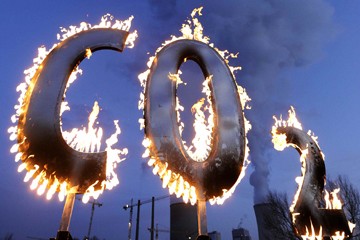December 11, 1997 The Kyoto Protocol began to be signed by the UNFCCC
The Kyoto Protocol is an international agreement concerning the United Nations Framework Convention on Climate Change (UNFCCC).
December 11, 1997 The Kyoto Protocol on climate change began to be signed
The key points of the Kyoto Protocol are to establish binding targets for 37 industrialized countries and the European community to reduce greenhouse gas (GHG) emissions. The average amount of gas must be reduced by 5% compared to the level of 1990 in the five-year period 2008-2012.

The main difference between the Protocol and the Convention is that while the Convention encourages industrialized countries to balance greenhouse gas emissions, the Protocol makes them committed to doing so.
Recognizing that developed countries are primarily responsible for the current high greenhouse gas emissions in the atmosphere as a result of more than 150 years of industrial activity, the Protocol places a heavy burden on nations. develop on the principle of " common but differentiated responsibilities ."
The Kyoto Protocol was adopted in Kyoto, Japan on December 11, 1997 and came into effect on February 16, 2005. Detailed rules for the implementation of the Protocol were adopted at the COP. 7 in Marrakesh in 2001, and is called " Marrakesh Treaty ."
By November 2007 there were 175 countries and government representatives from the participating countries.
The Kyoto mechanism
Under the Treaty, countries must meet their targets primarily through national measures. However, the Kyoto Protocol provides them with additional means to meet their targets by three market mechanisms.
The Kyoto mechanisms are:
- Emissions trading - called "carbon market"
- Clean development mechanism (CDM)
- Additional support program (Joint implementation- JI).
These mechanisms help stimulate green investment and help member countries meet their emissions targets in a cost-effective manner.

Monitoring emissions targets
Under the Protocol, the current emissions of countries must be monitored and recorded by senior officials.
The registration system for monitoring and reporting conference proceedings of the Parties must follow the mechanism.The UN Secretariat for Climate Change, based in Bonn, Germany, keeps a record of the international conference record to verify that the proceedings are consistent with the provisions of the Protocol. .
The report of the parties is done by submitting the annual emission summary and national report under the Protocol regularly.
The system ensures that the parties fulfill their commitments and help meet them if they encounter problems.
Adaptation
The Kyoto Protocol, like the Convention, is also designed to assist countries in adapting to the adverse effects of climate change . It facilitates the development and implementation of techniques that can help increase the ability to recover the effects of climate change.
Adaptation Fund was established to finance adaptation projects and programs in the developing countries of the Kyoto Protocol. The fund is primarily funded with a portion of the proceeds from CDM project activities.

The way forward
The Kyoto Protocol is generally seen as an important first step towards a global emission reduction regime, stabilizing greenhouse gas emissions, and providing the necessary structures for any international agreement. about climate change in the future.
By the end of the first commitment period of the Kyoto Protocol in 2012, a new international framework was negotiated and ratified in order to strictly transfer the emission reduction issue of the Intergovernmental Commission on variables. Climate change (IPCC) clearly stated is necessary.
- The future of a deal in Cancun is still far away
- Declaring Kyoto to deal with climate change
- Russia and Japan withdrew from the agreement on climate change
- Canada abandoned the agreement on climate change
- The world maintains 'weapons' against climate change
- The Kyoto Prize worth $ 1.8 million was divided into three
- Ancient Kyoto - World Cultural Heritage in Japan
- Vietnam strives to reduce the impact of climate change
- China began to treat pollution in the Songhua River
- Gmail starts supporting IMAP protocol
- SIP technology began to dominate the Vietnamese market
- Biosecurity management with genetically modified organisms
 Biography of hero Vu A Dinh
Biography of hero Vu A Dinh History of hematology
History of hematology Who is Mr. Tam Da 'Phuc-Loc-Tho' and what does it mean?
Who is Mr. Tam Da 'Phuc-Loc-Tho' and what does it mean? Unbelievable facts about the history of the oil and gas industry: Gasoline used to be cheaper than water, so abundant that it had to be dumped into the river...
Unbelievable facts about the history of the oil and gas industry: Gasoline used to be cheaper than water, so abundant that it had to be dumped into the river... The researchers figured out how to increase the WiFi transmitter range to an additional 67m just by updating the software
The researchers figured out how to increase the WiFi transmitter range to an additional 67m just by updating the software  The world maintains 'weapons' against climate change
The world maintains 'weapons' against climate change  Canada abandoned the agreement on climate change
Canada abandoned the agreement on climate change  Russia and Japan withdrew from the agreement on climate change
Russia and Japan withdrew from the agreement on climate change  SIP technology began to dominate the Vietnamese market
SIP technology began to dominate the Vietnamese market 